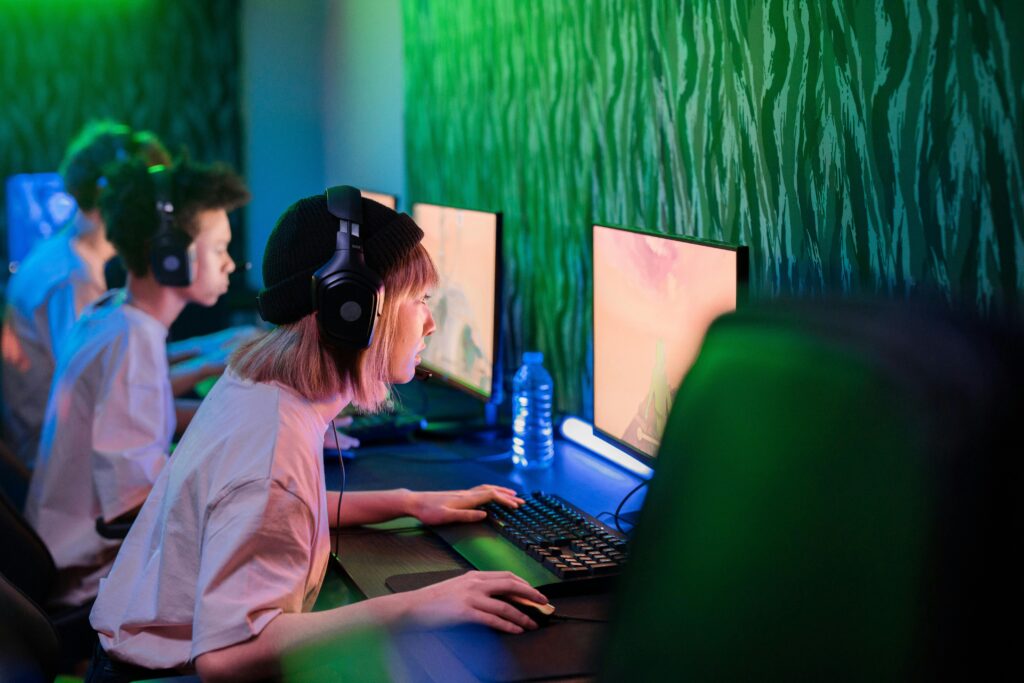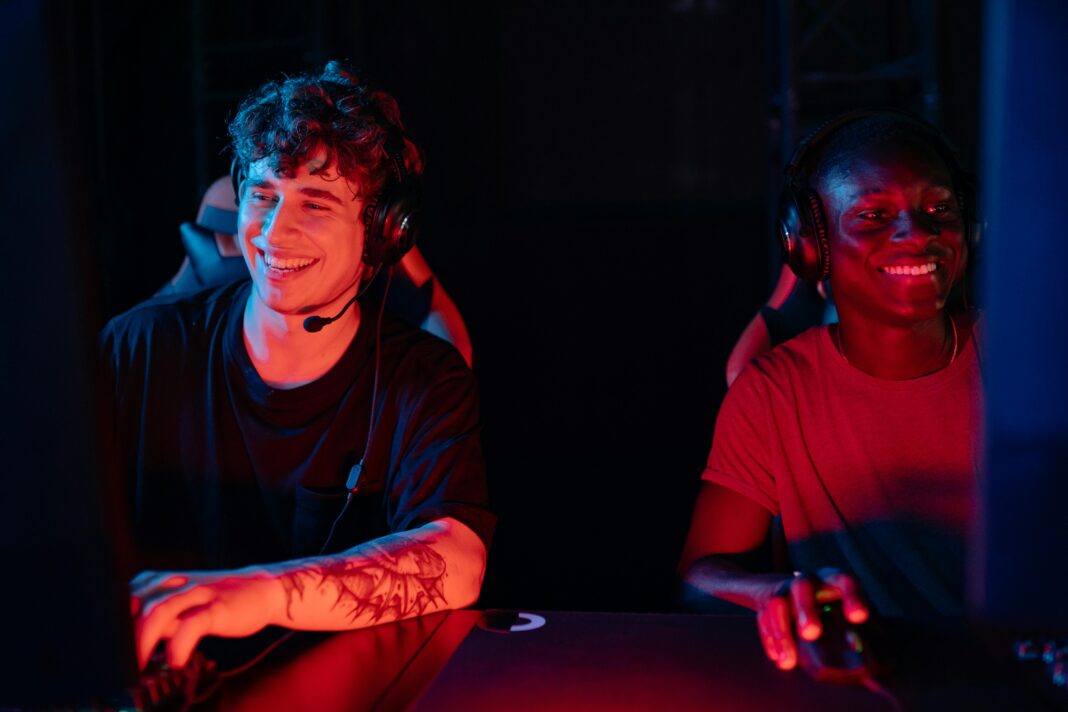Esports tournaments have transformed from small LAN parties into global spectacles that fill stadiums and attract millions of online viewers. But what really goes on behind the scenes to make these events happen? This in-depth guide will walk you through every single aspect of esports tournament organization, from the initial brainstorming to post-event wrap-up. No stone will be left unturned as we examine the intricate planning, technical requirements, player management, and business considerations that tournament organizers must master.

1. Conceptualizing the Tournament: Laying the Foundation
Selecting the Right Game
The foundation of any successful tournament is choosing the appropriate game. This decision impacts every subsequent aspect of organization.
- Current Popularity vs. Longevity
Organizers must balance choosing currently trending games (like Valorant or Fortnite) versus established esports titles with staying power (like CS:GO or League of Legends). While new games may attract hype, established titles guarantee stable viewership. - Developer Support and Competitive Infrastructure
Games like League of Legends and Overwatch have built-in competitive structures that make tournament organization easier. In contrast, organizing for games with less developer support requires more independent work in setting rules and securing broadcasting rights. - Technical Requirements
Some games demand more from hardware and internet stability than others. Fighting games like Street Fighter 6 have different needs than massive battle royales like PUBG.
Determining Tournament Format
The competitive structure must be designed to be fair, exciting, and logistically feasible.
- Single Elimination
Simple but brutal – one loss and you’re out. Best for smaller tournaments or early qualifying rounds. - Double Elimination
Gives teams a second chance after losing once, creating more opportunities for comebacks and dramatic narratives. - Round Robin
Every participant plays every other participant, ensuring the most accurate ranking but requiring more time. - Swiss System
Teams face opponents with similar records, preventing early mismatches while still allowing for a large number of participants. - Group Stage into Playoffs
Used in most premier tournaments, combining round robin group stages with single/double elimination finals.
Prize Pool Structuring
Money talks in esports, and prize distribution significantly impacts participant motivation and event prestige.
- Crowdfunding Models
The International’s compendium/battle pass system shows how community contributions can create massive prize pools. - Sponsor Contributions
Many tournaments secure prize money through sponsor agreements rather than direct funding. - Distribution Fairness
While top-heavy payouts (winner takes most) create drama, more even distributions help sustain smaller teams.
2. Securing Funding and Partnerships
Sponsorship Acquisition
No major tournament happens without financial backing.
- Industry-Specific Sponsors
Gaming hardware companies (SteelSeries, ASUS), energy drinks (Red Bull, Monster), and tech firms (Intel, NVIDIA) are the most common. - Non-Endemic Sponsors
Increasingly, mainstream brands like Mercedes, Louis Vuitton, and State Farm are entering esports sponsorships.
Media Rights and Broadcasting Deals
- Exclusive Streaming Contracts
Platforms like Twitch, YouTube Gaming, and Huya pay millions for exclusive broadcasting rights to major tournaments. - Traditional Media Partnerships
Some tournaments now appear on sports networks like ESPN or regional sports channels.
Merchandising and Ticket Sales
- Physical Event Revenue
Stadium ticket sales, VIP experiences, and venue concessions contribute significantly to large LAN events. - Digital Goods
In-game items, digital passes, and virtual merchandise create additional revenue streams.
3. Venue Selection and Technical Setup
LAN vs. Online Tournaments
- Local Area Network (LAN) Events
- Require extensive venue preparation
- Need hundreds of high-end PCs and consoles
- Must handle player accommodations and travel
- Online Tournaments
- Face challenges with cheating prevention
- Deal with regional ping differences
- Have lower production costs but less prestige
Production Quality Essentials
- Broadcast Equipment
Professional tournaments use:- Multiple 4K cameras
- Dedicated observer PCs
- Real-time replay systems
- Stage Design
Player pods, audience sightlines, and sponsor branding must all be carefully planned. - Internet Infrastructure
Redundant fiber connections with backup systems are mandatory to prevent disruptions.
4. Player and Team Management
Invitation Systems
- Direct Invites
Top-ranked teams often receive automatic qualifications to maintain competitive quality. - Regional Qualifiers
Open brackets that allow new talent to emerge while ensuring geographic representation.
Player Welfare Considerations
- Travel and Accommodations
Flights, hotels, and visas must be arranged for international competitors. - Practice Facilities
Top tournaments provide dedicated warm-up areas with identical equipment to main stages.
5. Tournament Execution: Day-of Operations
Pre-Match Procedures
- Hardware Checks
Every mouse, keyboard, and headset is inspected for modifications. - Anti-Cheat Measures
Software monitoring combined with physical oversight prevents cheating.
Live Event Management
- Match Scheduling
Strict timetables must account for potential overruns. - Contingency Planning
Backup systems for power, internet, and equipment failures are essential.
6. Post-Tournament Wrap-Up
Prize Distribution
Timely payment processing maintains organizer credibility.
Feedback Collection
Surveys from players, sponsors, and staff guide future improvements.
Media Coverage and Highlights
Post-event content extends engagement and provides value to sponsors.
FAQ
How much does it cost to organize a major esports tournament?
Premier events can cost $2-5 million when accounting for venue, production, prizes, and staff.
What’s the hardest part of tournament organization?
Coordinating international player logistics while maintaining strict competitive integrity.
How do small tournaments differ from large ones?
Smaller events often use online formats with simpler production, while majors feature elaborate LAN setups.
Conclusion
Organizing an esports tournament is a monumental task requiring expertise in event planning, technical production, business development, and community management. From selecting the perfect game to troubleshooting last-minute technical issues, every detail matters in creating a successful competition. As esports continues to grow, the standards for tournament organization will only become more professionalized and demanding.
Would you like me to expand on any particular section with even more specifics about equipment, staff roles, or legal considerations? I can provide deeper dives into any aspect of tournament organization.

